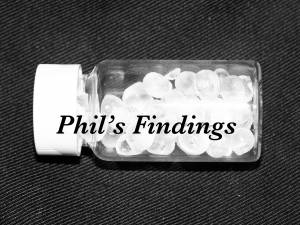Phil’s Finding’s #3: Swimming through Syrup
06 June 2011

Phil Howes, the Institute of Making’s post-doc researcher, shares his thoughts and findings as he delves into the sensoaesthetic world of materials. Check this space every Monday for Phil's latest posting.
During my research career, I’ve been lucky enough to work in a number of different areas and take on new projects. At the moment, I’m doing a lot of reading about psychophysics and statistics, both of which I haven’t studied in depth before. These are both fascinating areas, however a first look at the background material proved to be slightly baffling. But now, having found my feet, I’m able to appreciate some of the subtleties of the work which passed me by before.
As a scientist, when you start a new project first thing you need to do is get reading. It is impossible to do any innovative work before you thoroughly understand what’s been done before, and you do this by reading the papers published by others in the field. The problem is, if you’re new to the area, you don’t really understand much of what you read, and working through a paper can feel like swimming through syrup; you need to stop every few sentences to look things up (first stop Google). Sometimes you may not even understand the language used in the definitions, so you have to dig down another level or two to get a grip of things. This means that the paper you’re reading becomes a trunk, off which branches all the journeys you have to take to understand the language used. Of course, with all this diversion, it is very difficult to understand the paper in any depth.
So you go through all of the background material in this fashion, slowed down by diversions. This means that by the time you get to the end of your reading list, you haven’t necessarily learnt much about the core issues of each paper. However, what you have learnt is the language which allows you to understand the papers. So now the best thing to do is to go back to the beginning! This time, however, things start to make more sense. You can understand things in more depth, indeed you see things which you didn’t even notice before because they were hiding behind a vale of technical language. This is the point when you can really start learning.
Now things start to change. You understand the work to a point where you can question it, where you can see gaps. You might not have massive insight straight away, but you have moved from being a passive observer to an active questioner. This really is a beautiful moment as you realise you may be asking questions to which there is no known answer, and that no one has investigated before. From this point onwards you can start getting creative, and that creativity is the core of doing good work.